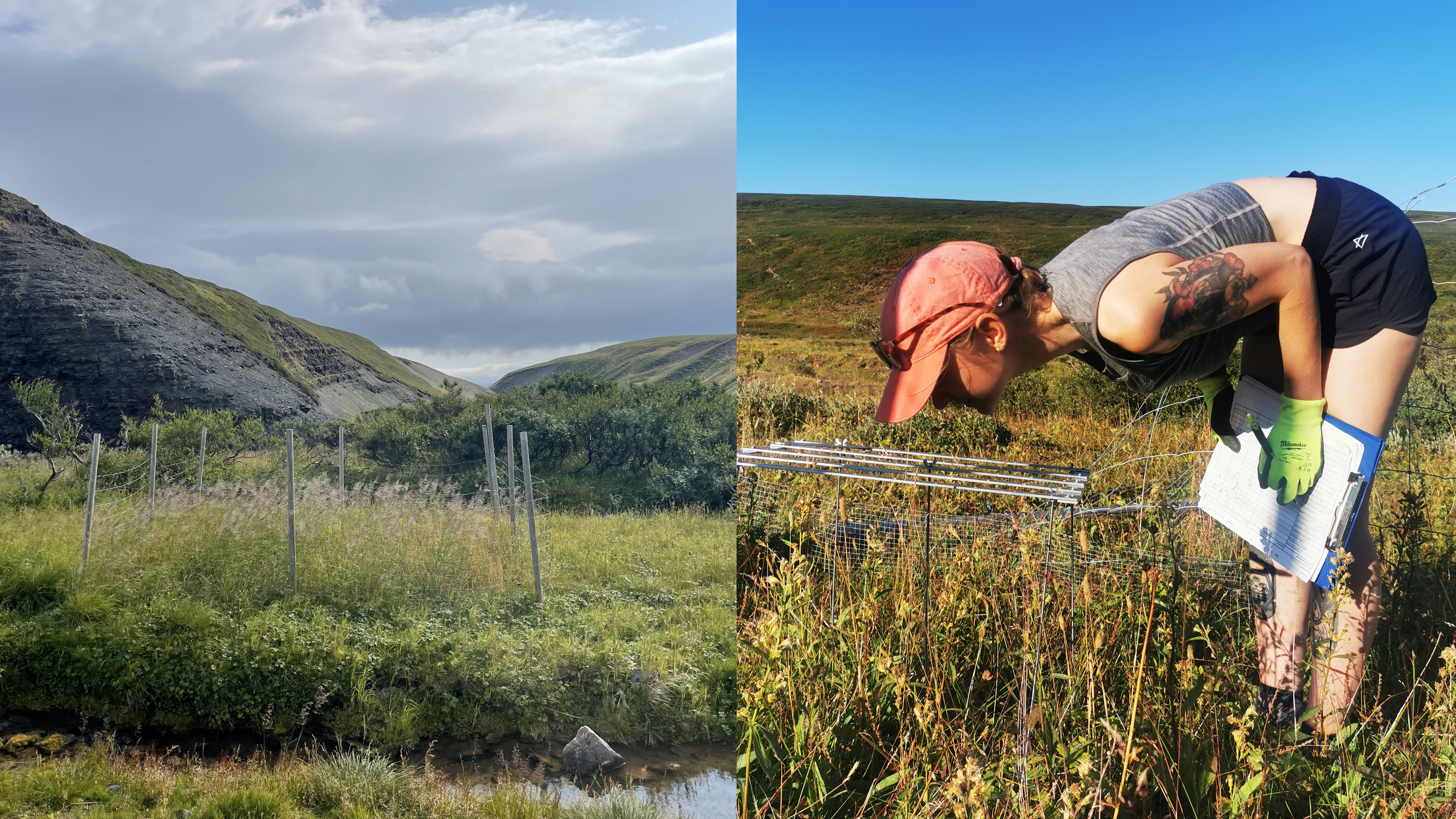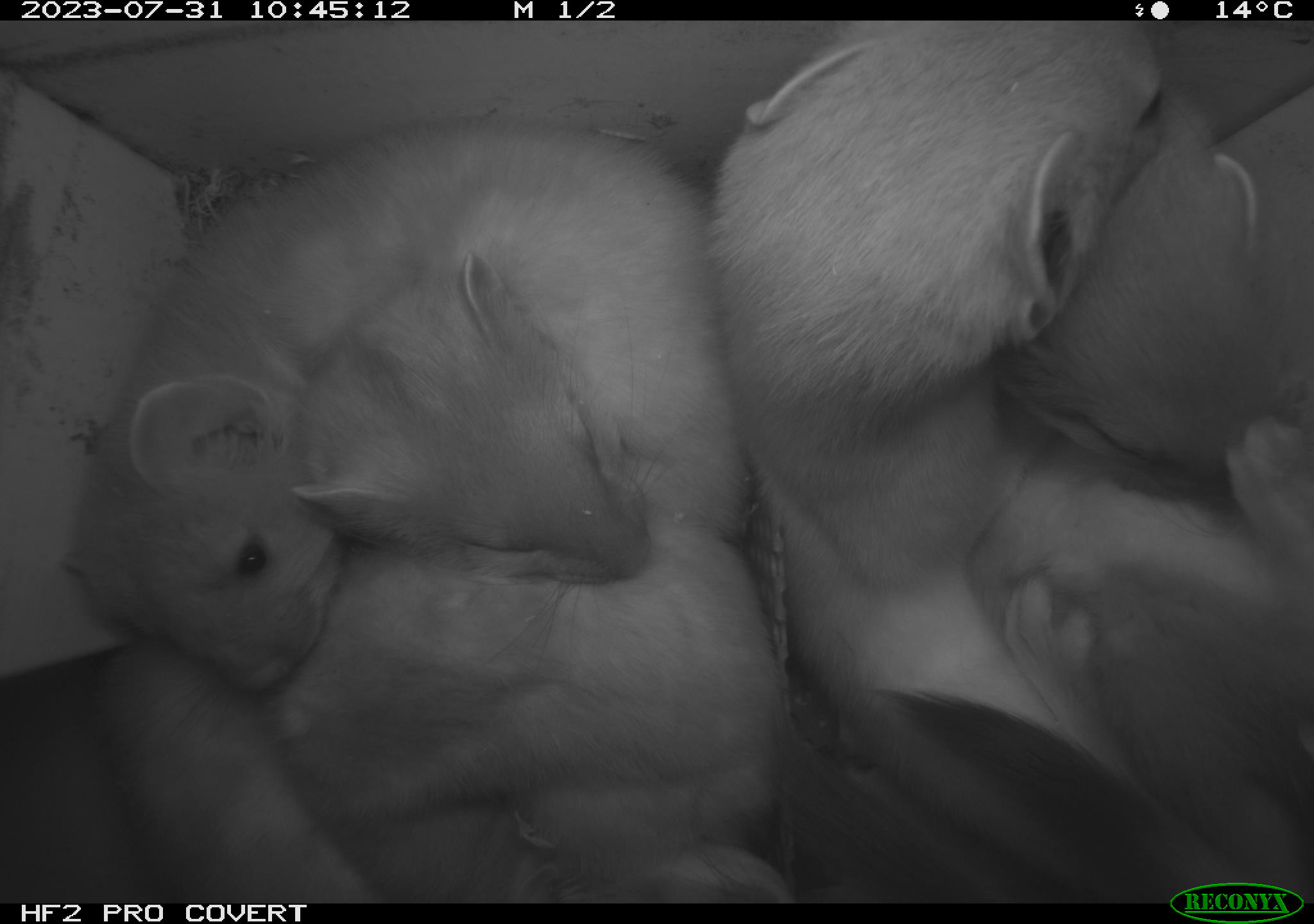The COAT field season is well underway, and several fieldworks have already been completed. Here is a brief report from some of them that took place in Finnmark.
A COAT fieldworker checking a small mamal camera trap. Photo: Eeva Soininen
Tall shrub tundra module
This year's COAT vegetation fieldwork has concluded, and we are happily adding our data to the 20-year time-series of plant biomass and diversity surveys from Varanger!
The weather for our anniversary fieldwork was rewarding us for our efforts with over 20 degrees and sun nearly every day. After a lack of rain in late July and early August, the soils had dried out and the vegetation showed signs of drought-stress in the higher up heath and snow beds. While our research area remained largely unaffected, there was a wildfire in the vicinity because of the extremely dry conditions. But since there was plenty of rain earlier in the summer, the meadow vegetation seemed unaffected in its growth or even benefiting from the warm temperatures. The meadows in the river valleys remained abundantly lush and green and some of our herbivore exclosures had exploded with plant-life this season, it seemed as if the biomass had increased everywhere.
At the end of our usual field survey in Komagdalen, we also took part in an herbivore diversity study that looked at the importance of above-ground biomass and nutrient content of vegetation for herbivore diversity.

The left image show one of our disclosures with luch medow vegetaion in contrast with the more grazed medow vegetation outside. Photo: Oline Eikeland. The right image show a COAT-fieldworker that collects biomass-data. Photo: Ingrid. G. Paulsen.
Tundra-forest module
The module completed its counts of moth larvae in Troms and Varanger during the first week of July. The data from Troms shows that populations of both autumnal moth, winter moth and scarce umber moth in this region have increased from last year. The counts for this year are mostly dominated by the winter moth, which has locally become abundant enough to cause severe defoliation of birch forest. However, there is also large spatial heterogeneity in winter moth densities, with some monitoring sites in Troms having very low larval counts.
The larval counts from Varanger resemble those of 2023, in the sense that they show very low densities of both autumnal moth and winter moth across all monitoring sites (scarce umber moth is so far absent from this region).
.jpg?ver=U3uCKY6PoHgSpQ_xNgiheQ%3d%3d)
Automnal moths. Photo: Moritz Klinghardt
Ptarmigan module
This year we have tested a new type of camera trap to monitor nest predation on ground nesting birds. We tried out a time laps camera with a wide-angle lens, which can be placed on the ground 0.5m from the nest. For the test we used artificial nests with quail eggs. The results are promising and will be formally evaluated in a master thesis. We also got help from experts from NMBU and Oslo University Museum to search for real nests of waders, ptarmigans, Lapland bunting and meadow pipits, so that we from next year hopefully can apply the camera traps on real nests.

A COAT fieldworker installing a nest predation camera trap. Photo: Eivind Flittie Kleiven
Small rodent module
In early July, we checked all small mammal camera traps at Komagdalen and Vestre Jakobselv study areas. This year, we saw a lot of mustelids, and several cameras had photographed entire families! (See below) It seems like the rodent populations had crashed during winter in a spatially heterogenous way. That means that in some areas, there were only very few photos of rodents during the spring – and correspondingly we observed no nesting birds of prey and only little waders. In other areas rodents were still abundant during the early summer, and nesting long-tailed skuas were abundant. We also registered lemming activity and shrub presence in snowbeds and can report that in some snowbeds lemmings had really plowed through everything last winter – except the exclosures that are meant to keep them out. So, we can really expect a contrast between the lemming-impacted control plots and the lemmings-free plots.

A entire family of stouts photogrphed in one of our camera traps. Photo: COAT